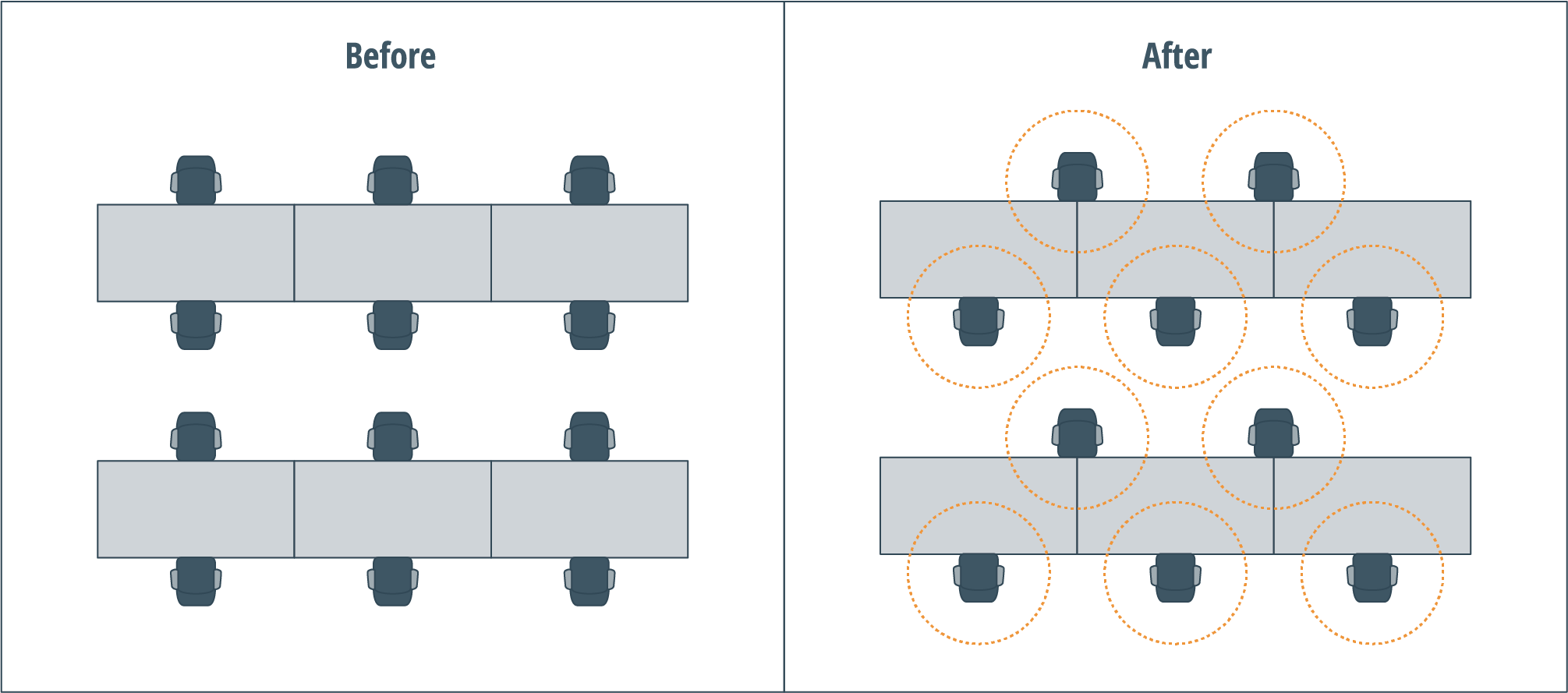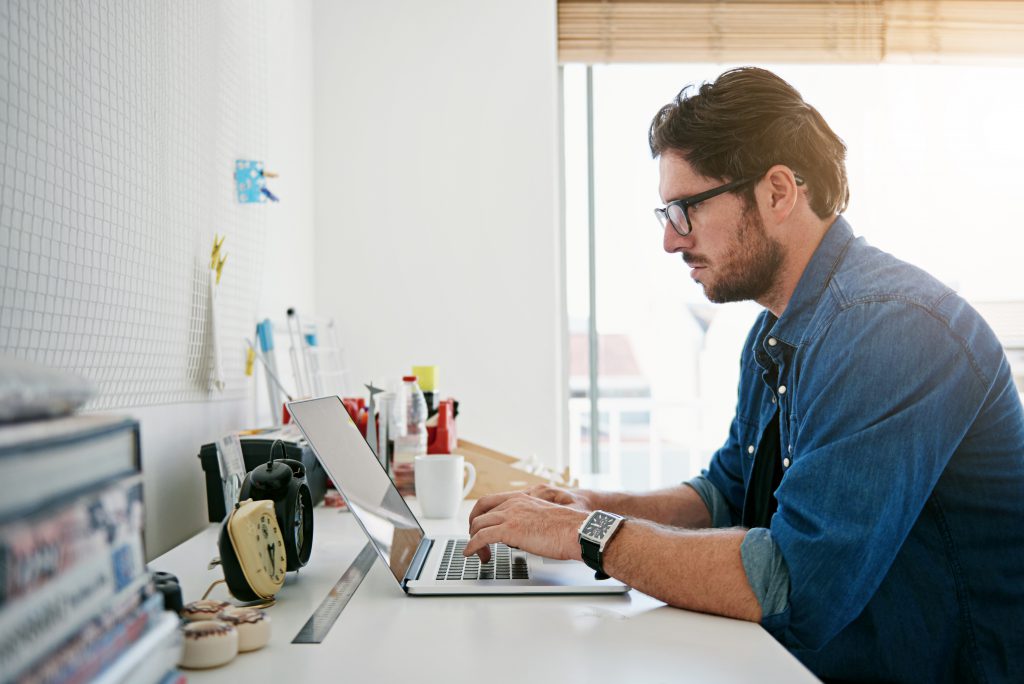For employers keen to get their workers back into the office after WA's snap lockdown, creating a safe environment is key.
COVID-19 physical distancing requirements and an increase in remote work have led to innovations workplace design.
We explore some of the steps businesses can take to make their offices COVID safe.
Density
Flexible working-from-home arrangements aren't just a great way of slowing the spread of illness - they also allow businesses to reduce overheads.
Instead of rows of desks in a classic open-floor plan, offices become spaces for collaboration, with different workspaces set up to accommodate different types of activity.
Architecture group Steelcase recommends to consider removing chairs and spreading workspaces so people are at least two metres apart.

US branches of KPMG and Deloitte are experimenting with the ‘hub and spoke’ model, where they limit their central office space to one hub and have several smaller offices, or spokes, in different directions from the centre.
The idea behind this is to allow employees to work at offices closer to their homes when they do go into the office, as well as reduce real estate costs.
But it also helps divide the workforce in case of an office outbreak, ensuring better business continuity.
Positioning
Designers aren't just considering how many people are in a space, but how they're moving within it.
In the office, desks can be reoriented to prevent people from working directly opposite or behind each other.

In meeting rooms or conference spaces, the amount of available chairs is limited and placed in a way to maintain social distance.
Directional arrows placed on the floor can help prevent people from crossing paths, limiting their exposure to infection.
Division
Physical barriers between workers and customers may be necessary for some operations, such as supermarkets.
But businesses with office environments can also increase barriers between desks to help stop the spread of airborne illness.
Enter the 'office pod', which comes with the added benefit of reducing noise pollution.
Hygiene
Cleaning regularly in a way that's visible to staff can help reassure your workers their health and safety is your primary concern.
Handwashing or sanitising stations can be positioned around the office, as well as signs asking workers to keep shared environments clean.
Reinforce these procedures at first-day orientations or staff briefings.
Masks
Ensure your staff have access to face masks and prepare them for times when masks may have to be the norm.
Provide clear guidance on the correct way to wear them and on which situations they are required.
As the Steelcase report explains, in some countries it is a social norm to wear a mask during cold and flu season.
Where COVID-19 community transmission is high, companies should consider making it a new norm for their employees to wear masks during times when people need to interact.

Work-from-home forever?
Not everyone believes employees will continue to work from home post-pandemic. Property Council of Australia WA Executive Director Sandra Brewer says office space will continue to be important to an organisations culture and brand.
“There's a lot of reflection that the reason that [work-from-home] has worked so well at the moment is that we all know each other - we've had established relationships to build upon," she says.
"We know young people in organisations learn from watching what the boss does or the decisions that are made, outside of the zoom call. We think that that plays a big part in the success of organisations."
COVID-19 remote working preparation template
This editable template gathers the kind of information you may need to have up-to-date and on hand in case of a snap lockdown. Read more...
Is your business prepared for a snap lockdown?
During WA's recent 'hard and fast' lockdown, businesses were forced to answer the question - are you prepared to move to remote work overnight? Read more...
Can you make your staff take a COVID test?
The global pandemic has caused a great deal of uncertainty for businesses, raising many questions they have not had to ask before. Read more...









